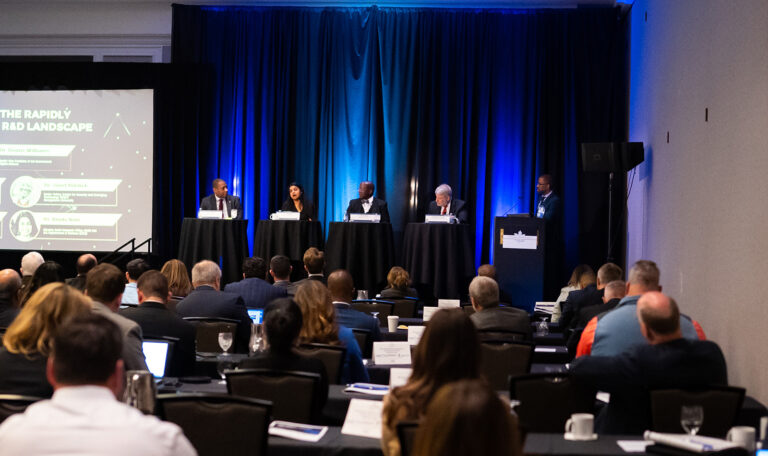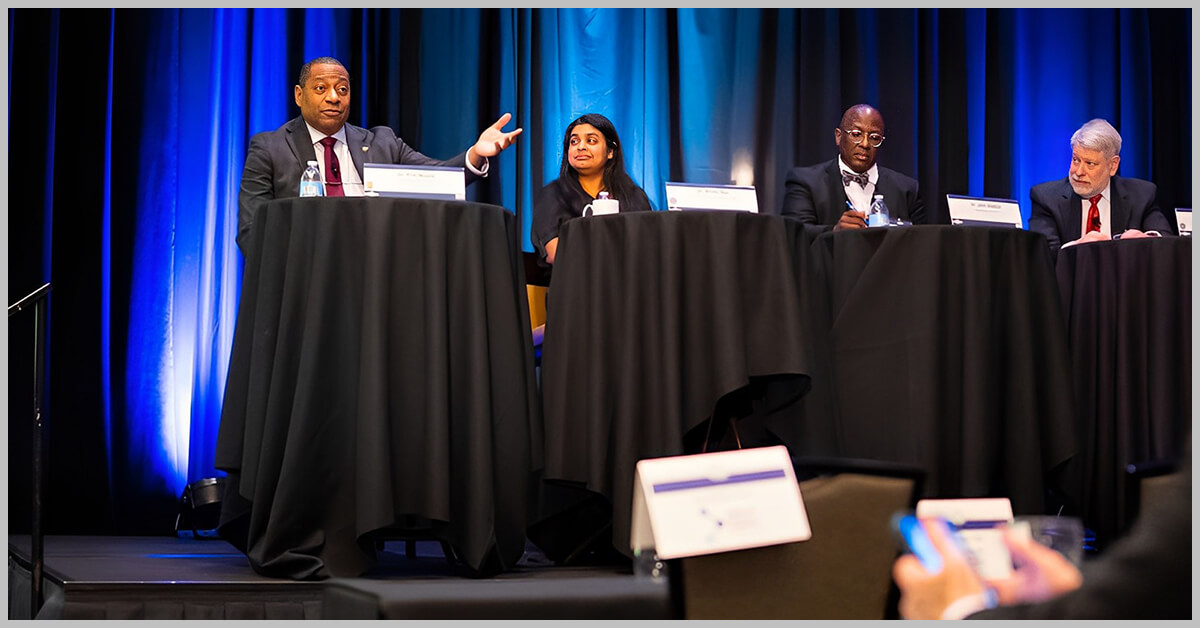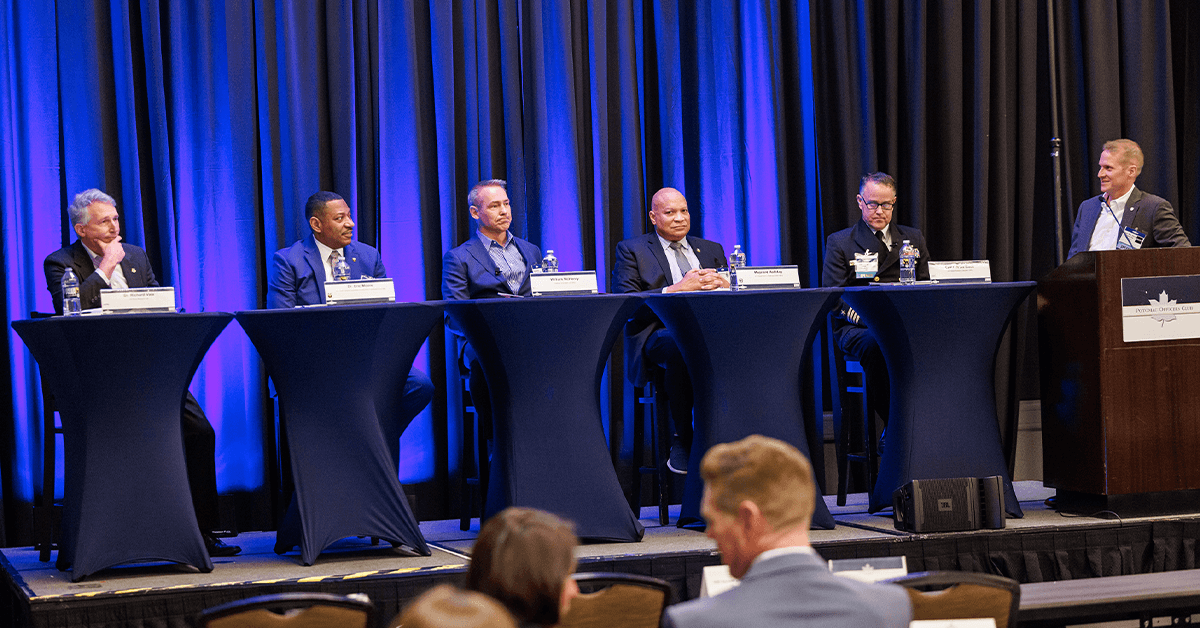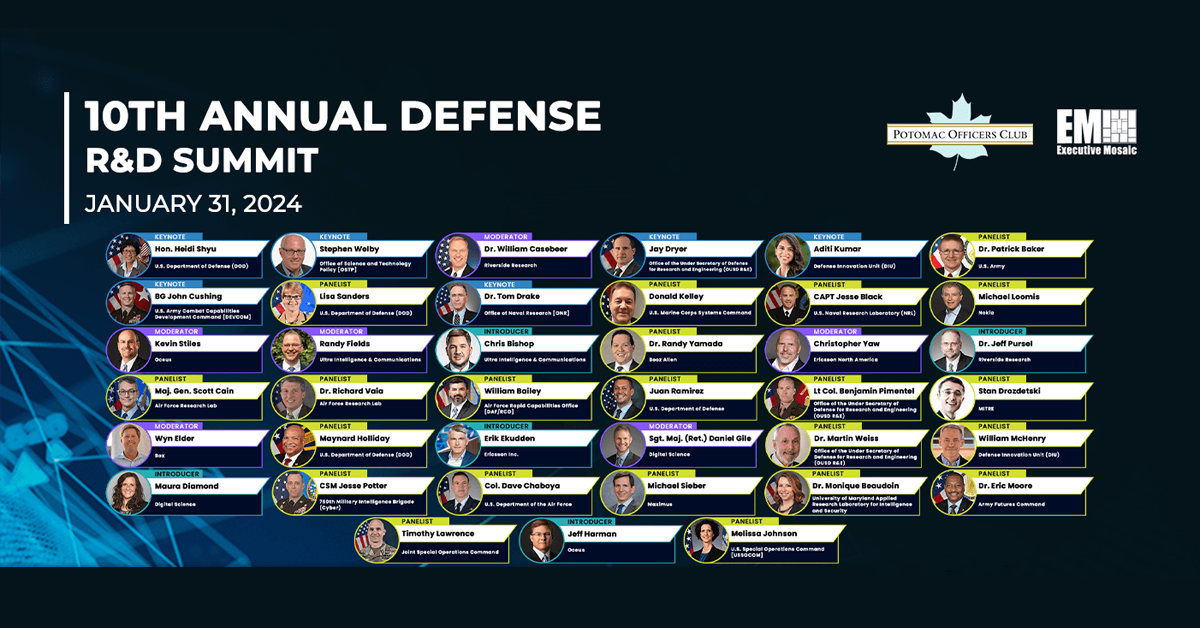The U.S. government’s technology pipeline can be bound up in years of regulations, requirements and confirmation. In the military specifically, the process of developing, prototyping, testing and delivering a tool to the warfighter can take years. It has left defense components scrambling for new sources of innovation, striving to speed the process of commercial technology adoption and being increasingly selective about where they spend their project funds.
A group of Department of Defense and DOD-adjacent R&D officials gathered to express the challenges and potential pathways for their sector during a panel discussion at the Potomac Officers Club’s Defense R&D Summit on March 23.
One panelist, Christopher Thomas, administrator of the Defense Technical Information Center, said that looking at defense research and engineering organizations’ shifts in nomenclature alone indicates how much has changed over the last half decade.
Thomas went on to say that the DTIC is trying to create and offer an improved search engineer feature so as to take away some of the burden from those trying to access his organization’s resources.
“Today, when you come to DTIC, you can hunt around 4.7 million documents and you have a pen or pencil and write it down. We don’t want you to do that. We want you to come in and say you want a document on a security classification guide for hypersonics, and we say, ‘oh, by the way, here’s everything we have in hypersonics,’ not, ‘here’s seven other queries,’” Thomas illustrated.
Dr. Eric Moore, deputy to the commanding general of the U.S. Army Combat Capabilities Development Command of Army Futures Command, shared that future vertical lift and Project Convergence are two areas where the service branch is seeing intensive and forward-looking RD&E activities. Future vertical lift is the push to entirely replace and refurnish the Army’s attack helicopter fleet. The process for deciding on workable materials, construction methodologies and a contractor to build the vessels took years.
“For future vertical lift, we had to start having stage gate reviews where we actually sat down and met with that community, had scientists and engineers and our leadership there at the same time, and were looking to make sure that we were hitting the proper metrics and that we were doing it not only in a timely fashion, but [that] it was truly [meeting] the needs of the the warfighter,” Moore explained.
Moore additionally shared that the Army established an initiative parallel to Project Convergence, which itself is the branch’s push to reach its modernization goals by 2030. The endeavor Moore is interested in is Technology Gateway, where smaller companies with less fully developed offerings as those in PC get a chance to demonstrate their capabilities to scientists and engineers for what may be some “potentially impactful technologies.” He suggested that it was a chance to derive inspiration and innovative concepts from less well-trod sources.

Similarly, fellow panelist Dr. Bindu Nair, director of the Basic Research Office for the Office of the Undersecretary of Research and Engineering at the DOD, outlined a number of ingredients, both conventional and less so, that she feels are crucial to moving the military’s research forward. Nair said that having access to all of the data analytics, trends and publications only gets you so far, and that cultivating a spark of creativity in program officers and researchers is crucial to yielding transformational results.
She went on to say that the DOD should look past the same “go-to places” that they search for talent.
“They do wonderful work, they create brand new ideas, but there’s a whole country out there. And then beyond that, there’s a whole world out there. And we have got to figure out how to tap into all parts of our capabilities and the human capital that we have,” Nair continued.
She also warned that the country needs to be wary about the amount of talent it is losing when international subject matter experts come to the U.S. looking for further training and work and are turned away for a job. Sometimes, they may even learn confidential information or practices in their time here and subsequently return home, posing a potential security threat, she said.
Dr. Jaret Riddick, senior fellow at the Center for Security and Emerging Technology at Georgetown University, echoed Nair’s sentiments about finding talent in unexpected places. Riddick, who worked in the government until very recently, recounted an anecdote wherein he called a colleague, who is president of a small college in Ghana.
“I called him once to talk about collaboration, thinking that I was coming to save the day. I left the phone call thinking we need to collaborate with them, because there are things that they’re doing to bring science to a local level and have it be an iterative process between local issues and science in a way that was really impressive to me,” Riddick said.






